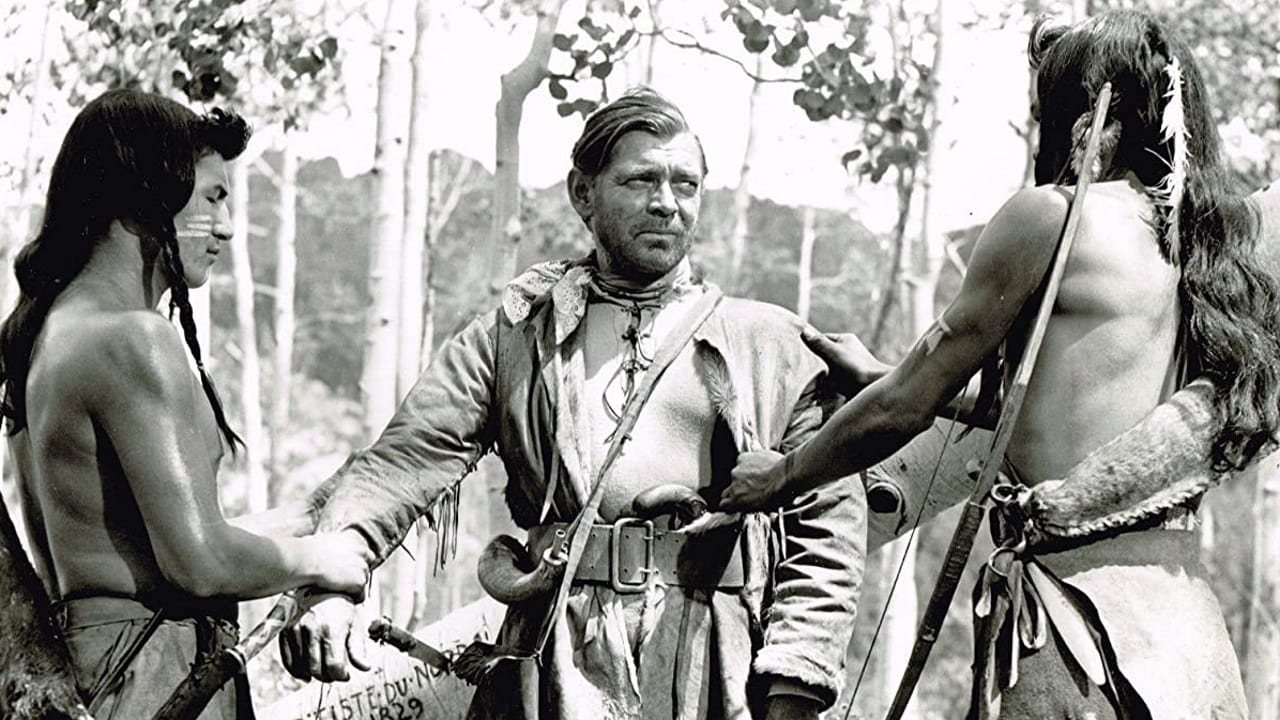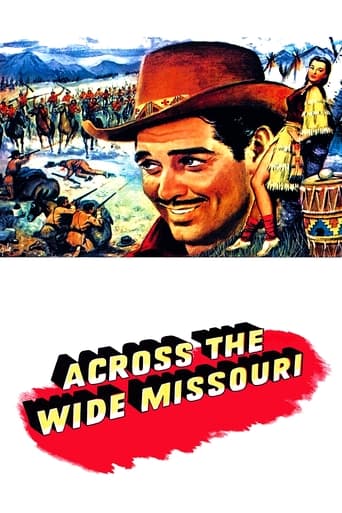

An absolute waste of money
... View MoreAbsolutely Fantastic
... View MoreThrough painfully honest and emotional moments, the movie becomes irresistibly relatable
... View MoreI enjoyed watching this film and would recommend other to give it a try , (as I am) but this movie, although enjoyable to watch due to the better than average acting fails to add anything new to its storyline that is all too familiar to these types of movies.
... View Morethe only thing worth seeing in this film is the scenery of the rocky mountain where it was shot. the camera men did a great job to show us how beautiful this country was, has been, will be(?)- that's big question mark. as usual, the sound track synchronized with every movement of the plots going, not quite annoying as other typical westerns. the storyline is so boring, but most of all, instead of using a young kid's voice to do the narration but a fully grown-up man to narrate the on-going storyline was a big mistake. the matured voice only disconnect the viewers feelings about what's going on. the whole scenario was just so childish and predictable at the best. again, this film is only good for people who like to enjoy and appreciate the scenery of wildness, other than that, nada. no sense to get so excited because of the main character was played by clark gable.
... View MoreBefore cows replaced bison as the top herbivore of the Great Plains, and before precious metal bonanzas were discovered west of the Mississippi, it was the exploitation of the often abundant beaver of the West that was the primary reason for adventurous young men to brave this dangerous, if often beautiful, wild country. Relatively few Hollywood films have dramatized this initial frontier phase.Even more so than the mining and cow towns, this was overwhelmingly a man's world. Hence, the inevitable romances in films featuring 'mountain men' usually involve 'Indian' maidens or a woman back home, or occasionally a woman at a trading post or army fort. Gable had long ago played a gold prospector("Call of the Wild"), and would, a few years later, star in a classic cattle drive film("The Tall Men"). Here, he stars in a Technicolor film that looks like it was meant to be an epic treatment of this previous frontier era, largely filmed in the spectacular mountains near Durango, CO. But, as others have pointed out,it apparently was much downsized in scope and chopped up to leave a less than epic treatment. Nonetheless, it does incorporate some historically relevant features, including a Rendezvous, which were most commonly an annual event. A run for his life, after Gable's character(Flint Mitchell) is captured by the hostile Blackfoot, reminds us of a real event involving trapper John Colter, generally regarded as the first mountain man, and a member of the Lewis and Clark expedition.J. Carrol Naish has a small role as Nez Perce chief Looking Glass, adopting father of Gable's romantic interest: Blackfoot princess Kamiah. There was a real Nez Perce chief named Looking Glass, who figured in the much later conflict with the US government over its reservation plans for the Nez Perce, but he was, at best, only a small boy when the present story presumably took place. The Blackfoot did develop an early dislike for Europeans, stemming from an incident occurring during the Lewis and Clark expedition. This dislike is personified in the war chief Ironshirt(Ricardo Montalban), who develops a personal dislike for Mitchell because he desires Kamiah, whom Mitchell married. Thus,Ironshirt eventually orders the spiteful assassination of Kamiah, and tries to kill her infant son along with Mitchell. Prior to these events, Kamiah leads Mitchell and associates into her native beaver-rich Blackfoot territory, where aging peaceable chief Bear Ghost develops a friendship with Mitchell. Strangely, Bear Grass is eventually assassinated, not by Ironshirt, but by one of Mitchell's fellow trappers! Evidently, this trapper blamed Bear Grass for the arrowed death of his brother, whereas Ironshirt was actually responsible.A good share of the dialogue is not in English, which makes for a more authentic experience, but at the price of some understanding. Surprisingly, Mitchell and his wife apparently made no attempt to learn each other's languages during their rather brief marriage, relying on interpreters for communication. The episode where Mitchell's infant son is strapped in a cradleboard to a runaway horse, being chased by Ironshirt, followed by Mitchell, is very unusual.Presumably, an inanimate 'stunt double' was used for the infant during the actual chase. In spite of Ironshirt's doings, the film generally presents Native Americans in a favorable light, and is thus unusual for films of that era. Ironshirt and Bear Ghost represent the two possible responses to the ongoing disaster of ever increasing European penetration across the NA continent and rapidly decreasing numbers of 'Indians': attempted extermination or passive resignation. Bear Ghost has lost all his sons to warfare, hence understandably takes the later approach.Adolphe Menjou plays Gable's frequent companion: French trapper Pierre. Alan Napier is also occasionally present as an eccentric Scottish aristocrat, come to paint the inhabitants of this frontier land, and to wow the natives with his full suit of armor. Maria Elena Marques makes a comely, rather shy, Kamiah. Nearly 30 years later, the film "Mountain Men" was released, with a remarkably similar story, with Charlton Heston taking the place of Gable. Again, we have a conflict between an anti-European Blackfoot war chief and the star trapper over an 'Indian' maiden, who has been bartered between the enemy Nez Perce and Blackfoot. Again, we have the excitement of a Rendezvous, and again, Heston has to run for his life from the Blackfoot, in mimicry of Colter. However, Heston's mountain man is much more of a loner than Gable's. His head is much more hirsute, and he mostly wears thick hides rather than Gable's neat buckskin summer wear.Other notable Hollywood films featuring western trappers include "Jeremiah Smith". "The Last Frontier", "The Scalphunters", and "Man in the Wilderness'. This last film features a reeanactment of the most unbelievable incidence of an epic trek through wilderness after a savage mauling by a grizzly, as documented by early mountain man Hugh Glass.The music consisted mainly of the traditional "Oh, Shenandoah", periodically in the background, the most common lyrics of which include the film title. This was sometimes sung by early boatmen on the Missouri,who might change the lyrics at whim. Incidentally, 'Shenandoah' often was thought to refer to an 'Indian' chief, rather than the Virginia Shenandoah Valley, as most people assume. Also, the children's songs "Skip to my Lou" and "Alouette", which were sometimes sung and danced to at trapper gatherings, are featured. An 'Indian' lullaby is also sung by Kamiah.
... View MoreThis Western film directed without any particular distinction by William Wellman is visually stunning and has moments that are exciting, touching and even thrilling. It is also an uneven movie with a patchy script which relies heavily on a voice-over narrator. The film is pretty thin on a strong story line. "Across the Wide Missouri" mainly consists of a string of episodes that suggests there was more of a screenplay here not captured in the film. Why? One only wonders.Clark Gable continued his pattern of pairing up with much younger leading ladies. When this film was made, he was 50 and Maria Elena Marques was 25. Interestingly, in the similar "Broken Arrow" made one year earlier, James Stewart (playing a scout rather than a fur trapper like Gable) was 42 to Debra Paget's 17----an identical difference of 25 years! To continue the comparison, both women portrayed Indian maidens although one is American Caucasian (Paget) and the other is Mexican (Marques). Both married their leading man in the films and died as the price for doing so."Across the Wide Missouri" and "Broken Arrow" have other similarities. Both films present sympathetic views of Native Americans, and their ability to intermingle freely with white outdoorsmen in the spirit of mutual respect if not friendship. They also reveal that the treachery in these relationships often came from the whites and not the Indians. While "Broken Arrow" is better written, "Across the Wide Missouri" may contain better performances by the two leading actors.One final interesting point to consider. Jack Holt (in his last film) played Marques's aged grandfather, Bear Ghost. At the time, he was 63, or just 13 years older than Gable. Yet Gable is playing Holt's grandson by marriage! Talk about make believe! In the blockbuster film, "San Francisco" made by M-G-M in 1936, Holt and Gable played romantic rivals seeking the affection of lovely Jeannette MacDonald. At that point, Gable was 35 and Holt 48. From romantic rivals to grandfather and grandson in just 15 years!
... View MoreThe movie begins with much voice-over, a bad sign. Then it just slides downhill with silly and intelligence-insulting scenes involving trappers and Indians. But, it reaches new and impressive lows when all the merry mountain men square dance with each other in a high alpine meadow. Meanwhile, the happy-go-lucky Indians sit around watching them. It's a better scene than the dancing cowboys in "Blazing Saddles". There is a minor flaw in this comparison; "Across the Wide Missouri" is not a comedy.
... View More